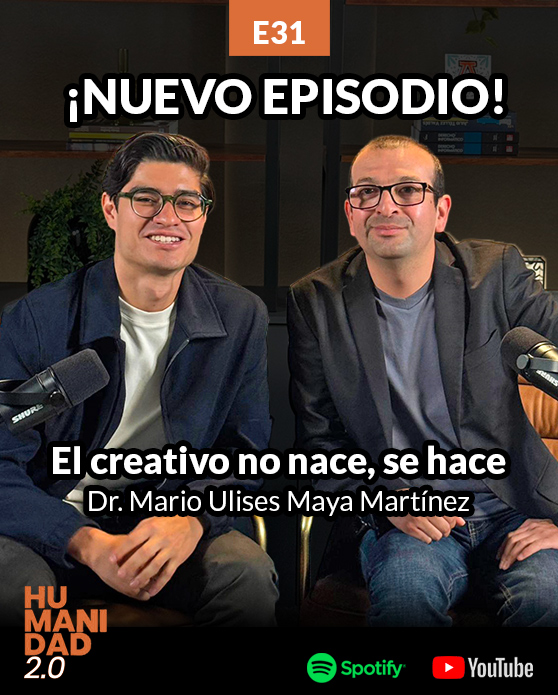
May 15, 2025
Author: Juan Manuel Palomares Cantero
Versión en español
Introduction
How much is a life worth on the public agenda? When a government decides who gets medicines and who doesn’t, when to open a clinic and when to let a community wait, it’s not making a technical decision: it’s making public policy. And it’s defining, even if not stated aloud, which lives matter more and which can wait. In times when health has become a battlefield of ideology, budgets, and elections, the uncomfortable question is inevitable: how much is a life worth to the State?
Public health should be the visible face of justice. But it often becomes a reflection of structural inequality. From bioethics and law, analyzing health policies doesn’t mean discussing administrative technicalities, but unraveling the principles — or their absence — that guide collective decisions in one of the most sensitive areas of government action.
It’s not enough to describe models; they must be analyzed in light of human dignity, normative frameworks, and the principles that should guide any policy that touches life and death.
Changing designs, absent principles: The Mexican case
In Mexico, the pendulum of health reforms has swung from one model to another without consolidating a state policy. In barely two decades, three different schemes for serving the uninsured population were implemented and dismantled, without institutional continuity or deep ethical evaluation to learn from previous successes or failures.
The Seguro Popular (2003–2018) represented a significant attempt to expand health service coverage to the most vulnerable sectors through a partial insurance scheme, with an explicit catalog of interventions and a tripartite financing model among federation, states, and families. Its design incorporated millions without formal social security, particularly informal sector workers, and reduced out-of-pocket expenses, which can be seen as a corrective justice measure against historical inequalities in access to essential services. Nevertheless, its technocratic logic — focused on operational efficiency, budget control, and attention to high-cost diseases — resulted in segmented care, territorial inequalities, and systematic exclusions of conditions not included in the catalog. From a bioethical perspective, this revealed a deep tension between financial sustainability and structural equity: when cost-benefit criteria override dignity, the system risks treating people as accounting files rather than rights holders.
In 2019, without rigorous evaluation of the previous model and amid persistent territorial inequality, INSABI was created promising free and universal health care without the need for affiliation. The institutional narrative changed, but the operational infrastructure did not; neither was a proportional increase in public spending guaranteed nor was a fiscal reform implemented to support the new scheme. The absence of clear operating rules, effective accountability mechanisms, and rushed implementation led to system blurring, causing uncertainty among users and health professionals and loss of continuity in medical treatments. From a bioethical perspective, INSABI represented a failed case of non-maleficence: the intention to guarantee the right to health ended up weakening institutional capacities and exposing the most disadvantaged to new forms of vulnerability. Although recentralization sought to correct fragmentation and corruption issues of the previous model, lack of planning, adequate financing, and rigorous monitoring turned a legitimate aspiration into a chaotic execution that left millions more vulnerable.
Today, with the creation of IMSS-BIENESTAR, the Mexican State has again recentralized care for the uninsured population within a historically fragmented and already overloaded system. This new model is supported by constitutional and legal reforms aiming to guarantee free, integral, and continuous medical care through a primary care-focused and proactive population management approach. Despite its foundations inspired by social justice and intentions to address social determinants of health, the project faces serious technical, financial, and operational challenges that hinder effective implementation. The risk is clear: that debate gets stuck in bureaucratic disputes over which institution controls the system, while the sick person — who needs dignified, timely, and effective care — is left out of decision-making focus. From a bioethical view, the crucial question remains: is the common good being prioritized or political control over the system?
From a legal standpoint, both Article 4 of the Constitution and the General Health Law enshrines the right to health protection. However, model changes every six years, without orderly transitions or institutional capacity consolidation, represent a form of indirect violation of this fundamental right. Stability and coherence of public policies are essential conditions to guarantee the progressive realization and non-regression of social rights. Lack of continuity, persistent inequality in resource allocation, and unequal execution among federal entities weaken model legitimacy and compromise their ethical and legal viability.
Latin American lessons: Vaccines, pandemic, and maternal health
The Mexican experience is not isolated. In Latin America, the COVID-19 pandemic reflected both strengths and ethical weaknesses in public health systems. There were notable responses, like Uruguay’s high vaccination rates through solid institutional coordination. But scandals also arose exposing moral fragility during crises. Peru’s “vacunagate,” where officials irregularly received vaccine doses amid collusion and opacity, showed how lack of integrity turns public policy into a sophisticated exclusion mechanism. Bioethics poses urgent questions: was distributive justice respected? Was there real transparency or political calculation?
The contrast between authoritarian models — such as El Salvador’s use of health discourse to justify draconian measures — and dialogic approaches like Costa Rica’s focus on community health and social participation revives an essential ethical dilemma: is it possible to protect public health without violating fundamental rights?
Another critical lesson is maternal health, particularly in countries like Guatemala and Honduras, where maternal mortality disproportionately affects indigenous, rural, and adolescent women. Early pregnancy in contexts of poverty and misinformation multiplies risks and exposes structural failures: lack of access to obstetric services, normalized obstetric violence, and precarious care. Here, not only is the right to health violated, but also human dignity. From an ethics of care and justice perspective, this omission represents a double failure: failing the principle of justice and non-maleficence by leaving unprotected those who need it most.
Finally, while international organizations like WHO and PAHO promote laudable principles — universal coverage, equity, primary care — their implementation is not free of tensions. Often, guidelines result in uniform formulas that ignore local realities and reinforce technocratic logics that perpetuate inequality. An ethical application requires genuine subsidiarity: strengthening community capacities and allowing solutions to emerge from the territory, not international offices. Equity in health is not decreed; it is built from the peripheries, with participation, justice, and dignity.
Toward public health with dignity: Proposals from bioethics and law
Bioethical evaluation of public health policies goes beyond denouncing failures; it proposes solutions. At least three minimal conditions should be met for any public policy to be ethically and legally legitimate:
Real democratic participation: Health decisions must involve affected actors — patients, professionals, communities — in genuine deliberative processes, not mere symbolic consultations. Committed bioethics demands breaking technocratic verticality and opening spaces for ethical-political dialogue.
Clear legal basis: Every policy must be anchored in norms consistent with the Constitution and international human rights treaties. Announcing rights is not enough; they must be guaranteed with mechanisms, budgets, and evaluations. Law should be more than a reference framework — it must be an enforceable tool.
Orientation to the common good: Decision-making logic should not be political profitability or electoral calculus but collective well-being. This implies prioritizing resources for those who need them most, committing long-term, and resisting short-term temptations. Health policy must care for the person and strengthen social fabric.
These conditions are simultaneously bioethical principles (respect for human dignity, defense of physical life, justice, subsidiarity, solidarity, and common good) and legal demands. Ignoring them risks turning public policies into empty promises or worse, mechanisms of exclusion.
Conclusion: From discourse to real care
Today everything can be reduced to propaganda; we need to return to the essential: public health is not a discourse. It is a concrete form of care that demands responsibility, structure, principles, and commitment.
From bioethics, we have learned there is no neutrality in public decisions. Every policy expresses a vision of the human being, justice, and the State’s role. From law, we know these decisions must comply with norms, protect rights, and be accountable.
Reviewing national and international public health initiatives leaves a clear lesson: changing names or promising free care is not enough. What transforms health systems is ethical, legal, and operational coherence.
Public health policy must heal, not harm. And to do so, it must look at the person, not the number; the community, not just the system; the future, not just the next six years.
Juan Manuel Palomares Cantero is a lawyer, master’s and PhD holder in Bioethics from Universidad Anáhuac, Mexico. He has served as director of Human Capital, and as director and coordinator general at the Faculty of Bioethics. Currently, he works as a researcher at the Academic Directorate of Integral Formation at the same university. He is a member of the Mexican National Academy of Bioethics and the Latin American and Caribbean Federation of Bioethics Institutions. This article was assisted by ChatGPT, an AI tool developed by OpenAI.
The opinions expressed in this blog are the authors’ own and do not necessarily represent the unanimous view of the seminars, nor the official position of CADEBI. We value and encourage any comments, responses, or constructive criticism.
1. Knaul, F. M., Wong, R., & Arreola-Ornelas, H. (2013). Financing health in Latin America: household spending and impoverishment (vol 1). Cambridge, MA, USA: Harvard Global Equity Initiative, Mexican Health Foundation. International Development Research Centre, 1.
2. Sovilla, B., & Díaz Sánchez, Á. M. (2022). Del Seguro Popular al Insabi:¿ Por qué recentralizar el gasto público en salud en México?. Gestión y política pública, 31(2), 63-94.
3. Borja-Aburto, V. H. (2024). La atención primaria en el Modelo de Atención a la Salud para el Bienestar en México. salud pública de méxico, 66(5, sept-oct), 670-676.
4. Bermúdez-Tapia, M. (2021). Políticas públicas, pandemia y corrupción: el caso vacunagate en Perú. Rev Direitos Sociais Polit Publicas, 9(1), 984-1008.
5. Galbán, H. G. (2022). Embarazo adolescente y mortalidad materna en países de América Latina. Población y Desarrollo-Argonautas y Caminantes, 18, 10-26.
6. Pérez, G. (2021). Cobertura Universal de Salud (CUS)“Entre los derechos y el mercado: tensiones en la. Documento de Trabajo N 7: Apuntes sobre Desigualdades y Políticas Públicas Distributivas, 44.
Más información:
Centro Anáhuac de Desarrollo Estratégico en Bioética (CADEBI)
Dr. Alejandro Sánchez Guerrero
alejandro.sanchezg@anahuac.mx





